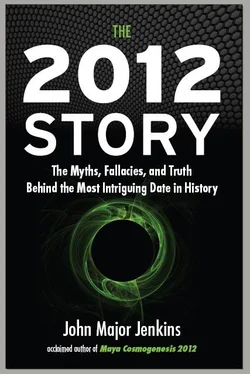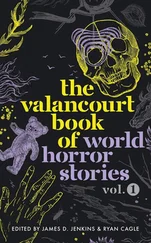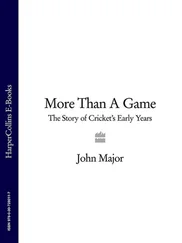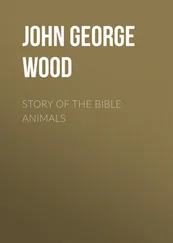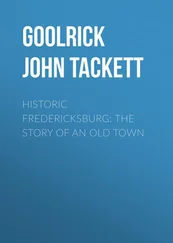These considerations apparently mattered little to scholars of the 1930s and ’40s, for other challenges were demanding their attention. Ethnographic opportunities, for example, were opening up in Mexico and Central America. Anthropologists such as Oliver La Farge, J. Lincoln, and Maud Oakes were spending lots of time in remote Maya villages documenting survivals of calendar rites thought to have been long forgotten. And, of course, the decipherment of the ever-enigmatic Maya hieroglyphic script came to be of primary importance. But Thompson resisted what promised to crack the whole thing wide open.
When the brilliant independent linguist Benjamin Whorf decoded, in the early 1930s, phonetic elements in the glyphs, Thompson pounced. He craftily critiqued the weak details of the arguments yet evaded the overall importance of the new perspective. After Whorf died at the young age of forty-four, Thompson flayed Whorf’s work. It was a difficult and revealing chapter for both Thompson’s and Whorf’s legacy. In retrospect, Thompson was very right about the errors in Whorf’s work. However, Whorf’s overall hunch was correct—the glyphs did contain phonetic elements. Unfortunately for Thompson, two more pioneer figures were soon to appear, and they hailed from a country that he had a personal problem with: Russia. Like many people, Thompson adopted a hatred of Communism after World War I and harbored bad feelings toward Russians throughout his life.
Russian artist Tatiana Proskouriakoff belonged to a sector of humanity that is often overlooked but has made some of the most important breakthroughs in Maya studies. That category is: woman. When she worked on the Maya site of Piedras Negras as an artist, she naturally became intrigued with Maya writing. Copying the glyphs over and over again, she became familiar with repeating patterns. Soon she identified what she believed to be historical events and glyph names for rulers. This, from Thompson’s ahistorical viewpoint, was not acceptable. And yet, as he himself had to eventually admit, almost on his deathbed, she was right.
Yuri Knorosov, the second Russian of note, experienced the epitome of what happens when an outsider advances a new insight. The insight was shocking to the establishment because it came about not by amassing more and more data until the correct interpretation appeared; no, the data had been lying around for decades, waiting for the right person to come along and reframe the material in such a way that the right interpretation clicked into place. This was especially true for the breakthroughs in hieroglyphic decipherment advanced by Knorosov in the 1960s. There was a key, long present, that had gone unrecognized for many years. That key, as Benjamin Whorf had proposed decades earlier, was that the glyphs were both phonetic and logo-graphic (representing a spoken word). Thompson resisted Knorosov’s work as if it heralded a Communist invasion, and the avalanche of epigraphic progress really got under way only after Thompson’s death in 1975.
WHO SAID IT’S THE CYCLE ENDING?
All these players in the evolution of Maya studies contributed in their own ways to the key issue for the 2012 discussion: the correlation question. Despite Thompson’s confirmation of Goodman’s neglected work, the correlation question continued to tug at scholars. When ethnographic information was gathered in the 1930s and ’40s, it became apparent that the surviving 260-day count did not jibe with the proposed original GMT correlation. It was two days out of joint. Thompson took another look at the historical documents and realized that two leap days had been overlooked in the de Landa material. Thus, as of 1950 the modified GMT-2 became the final correction, which brought all the criteria into congruence.
In 1946, elder archaeologist Sylvanus Morley published his magnum opus, The Ancient Maya . It offered a curious table as Appendix 1, in which Katun and half-Katun endings were correlated with their Gregorian equivalents. But the table ended with 12.5.0.0.0, 8 Ahau 3 Pax, April 4, 1717 AD. As with Thompson’s chart of 1927, however, the sharp reader could track the Baktun endings given and easily extrapolate that the 13th Baktun would end just about on December 23, 2012. But the entire table was calculated with the original GMT correlation. The third edition of The Ancient Maya (1956) corrected the table two days, to the new value of the GMT-2 correlation, but the table, as in the first edition, remained incomplete. Nevertheless, the table provided a convenient resource that could have been easily extended out to the cycle ending in 2012. In fact, Maya epigrapher Barbara MacLeod told me that, as a Peace Corp worker in Belize in 1973, she did just that. It wasn’t until the fourth edition of The Ancient Maya (1983) that the tables were extended out to the end of the 13-Baktun cycle: 13.0.0.0.0, 4 Ahau 3 Kankin = December 21, 2012.
By that time, Michael Coe’s 1966 book, The Maya, had already offered what was to be the first documented mention of the 13-Baktun cycle ending. But there was a problem. Although Coe knew and followed the correct GMT correlation, the date reported (December 24, 2011) was in error. It’s not exactly clear how Coe arrived at this date, especially when the reference table in Morley’s book was so easily available. Coe’s error was corrected in a later edition, but the damage was done. By 1971 other developments in the popular appreciation of the ancient calendar were astir. Tony Shearer published his poetic treatise that year, Quetzalcoatl: Lord of Dawn , in which he suggested that 1987 would be a great cycle ending prophesied by the ancient Aztecs. Soon afterward Frank Waters came out with his book on the Maya cycle ending, Mexico Mystique , using Michael Coe’s date. A watershed moment occurs here in the transmission of obscure academic machinations out into the public arena. The first wave in a growing tsunami of popular books on 2012 was about to begin.
CHAPTER TWO
The Long Career of the Long Count
We can, therefore, with all good conscience hail our “New World Hipparchus” as a creative genius in his own right, not beholden to the ideas or ideology of any other people or region of the world…
Soconusco may well have served as a bridgehead into Mesoamerica for a variety of South American cultural traits, but there seems little doubt that it constituted the very “hearth,” or cradle, of the intellectual life of indigenous North America. The unique 260-day sacred almanac is the product of a convergence of time and space that may be directly traced to Izapa. 1
—VINCENT MÄLMSTROM
Time doesn’t have an end, but it does have a middle—so say the mod ern Quiché Maya. 2And that middle, always, is located right dead center in the Now. A calendar, however, is not time, in the same way that a map is not the territory. As philosopher Ken Wilber said, “It’s fatal to confuse the two.” 3
The 13-Baktun cycle of the Long Count calendar has a beginning, a middle, and an end. Its beginning or “zero date” (August 11, 3114 BC) does not indicate when the system was invented. That date was a back calculation made thousands of years later by the creators of the Long Count. Similarly, the end date in 2012 was a forward calculation. Together, the alpha and omega of Maya time philosophy delineate a World Age lasting 5,125.36 years. That’s 1,872,000 days, to be exact.
The Maya doctrine of World Ages is found in The Popol Vuh , a document recorded in the 1550s by Quiché Maya elders. In it, we read that humanity has passed through a sequence of World Ages, and each time one of these World Age cycles comes to completion, a transformation and renewal of humanity occurs. Right away, it’s clear that the 13-Baktun cycle of the Long Count and the World Age doctrine in The Popol Vuh are linked. They are both expressions of an underlying World Age doctrine.
Читать дальше
